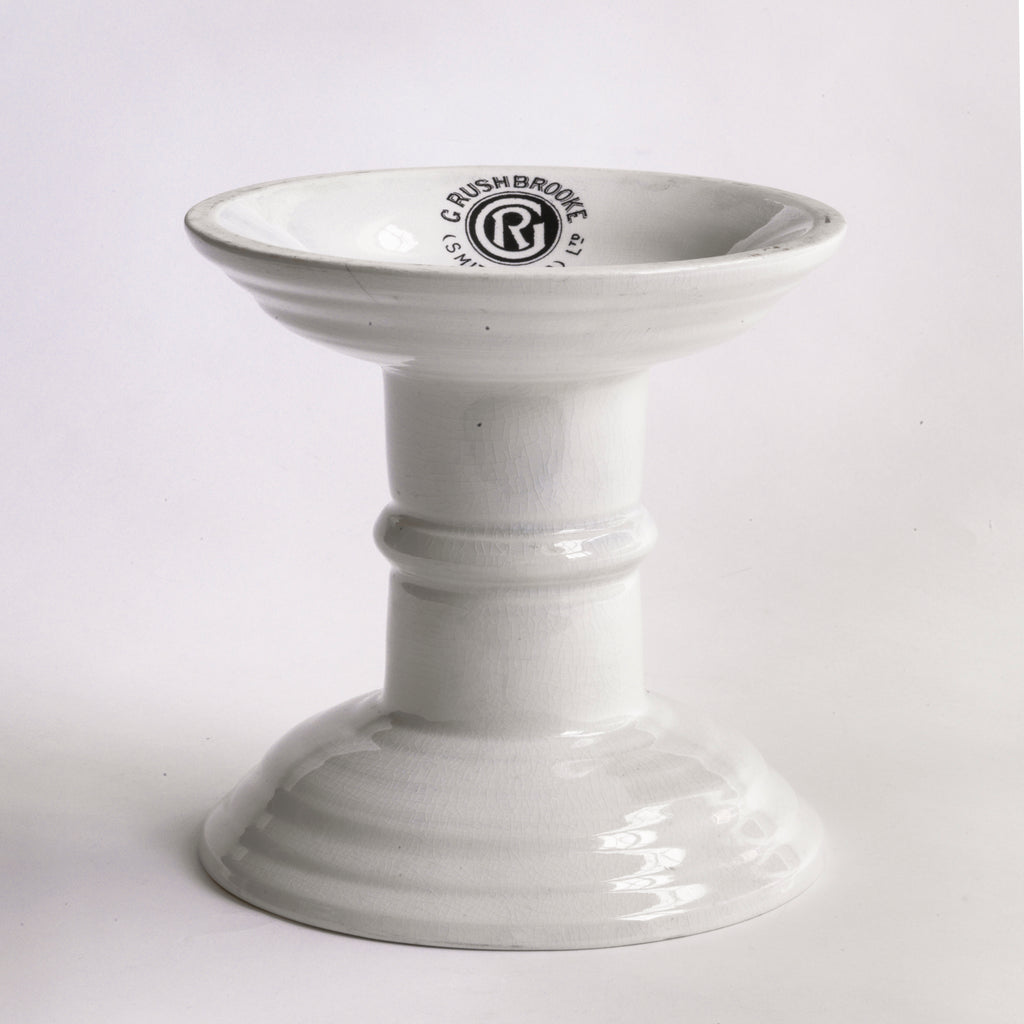VINTAGE
Smithfield Market Ham Stand
£165.00
A good-looking Edwardian ironstone ham stand that would have originally graced the counter-service food store of G Rushbrooke of Smithfield Market, London. The top of the stand is marked "G Rushbrooke (Smithfield) Ltd" and it has a good and very pleasing weight to it. The ham was stood on top, its curve fitting into the stand's well, so it could be easily carved in situ - as well as beautifully displayed.
The stand's pared-back pleasing shape and white ironstone colour provides a glimpse into Victorian utilitarianism and into nineteenth century daily life and its needs – which now chimes with our own twenty first century ideals and modern aesthetic. Stand a plate on top, and it can be used to display and serve pies, cakes, tarts, whatever you please.
History
With a rich history of trading, Smithfield has been an important site in London for nearly a millennium. Originally a grassy expanse of land stretching to the River Fleet, Smithfield was once referred to as “Smooth Field”, meaning smooth plain. Its convenient access to water and land for grazing as well as a location on the edge of the historic City walls meant the area became the site of London’s livestock markets from as early as the 12th Century.
The current Victorian Central Meat Market was built in the 1860s by the Corporation of London and was designed by the City Surveyor, Sir Horace Jones, to be a self-contained city for the meat traders. It was a spectacular feat of Victorian engineering, for meat was delivered by underground railway tracks. The railway was at the heart of the market’s design and the entire basement was a station that trains from across the country passed through. Today some of the local street names still remember the history of the old market, such as Cock Lane, where poultry was sold; Cow Cross Street, where livestock was traded; and Cloth Fair, home to the rag trade.
Year of manufacture: c.1910
Origin: England
Material: ceramic ironstone
Dimensions: Diameter 19cm Height 19.5cm
Condition: excellent with no restoration, just the tiniest nick to the top edge (see main image)and some crazing to the glaze, but nothing untoward.












